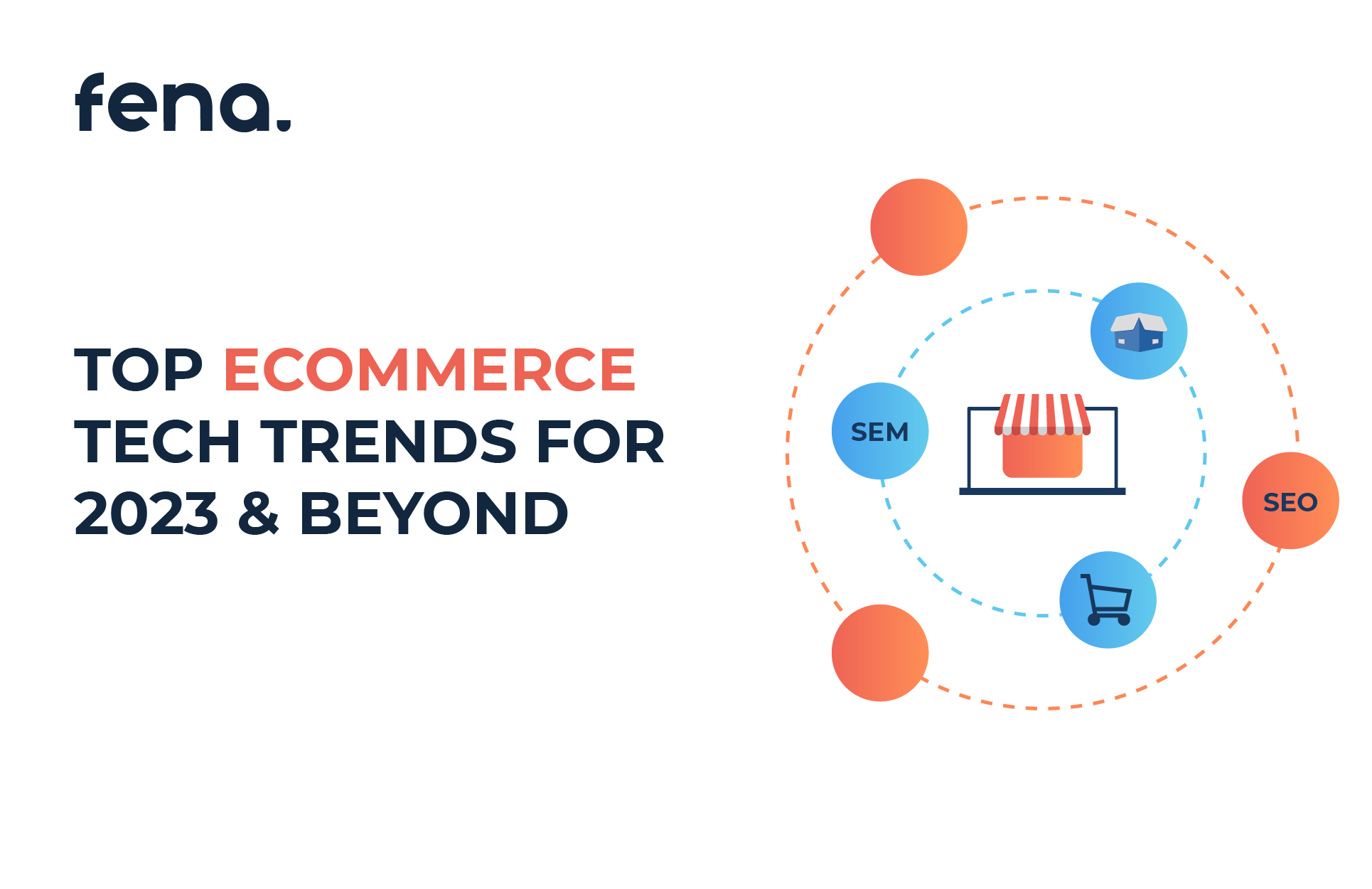Top eCommerce Tech Trends for 2023 & Beyond
by Gosia Furmanik on April 19, 2023

The world of ecommerce has witnessed a remarkable transformation in recent years. With the proliferation of digital technologies and the growing preference for online shopping, businesses are increasingly embracing technology to enhance their operations and stay ahead of the curve.
As we head into 2023, here are some of the top ecommerce tech trends to watch out for:
Software for eCommerce
The software used for eCommerce has a direct impact on the customer experience. In 2023, we can expect to see an increase in the use of artificial intelligence (AI) and machine learning (ML) to improve the customer experience. AI and ML can be used to analyse customer behaviour, predict buying patterns, and personalise the shopping experience for each customer. Additionally, we can expect to see an increase in the use of augmented reality (AR) and virtual reality (VR) to create immersive shopping experiences. This will allow customers to try on clothes virtually or visualise how furniture will look in their homes before making a purchase.
Another trend we can expect to see in 2023 is the use of headless eCommerce platforms. A headless eCommerce platform allows businesses to separate the front-end customer experience from the back-end technology. This provides greater flexibility and customization options for businesses, enabling them to create unique and personalised shopping experiences for their customers.
Payments for eCommerce
Payment processing is a critical aspect of ecommerce, and businesses are increasingly looking for ways to streamline this process and make it more secure. One of the key trends in this space is the rise of mobile payments. With the increasing use of smartphones and mobile devices, businesses are looking for ways to make it easier for customers to make payments on the go.
Mobile payments can take a variety of forms, including mobile wallets, QR codes, and mobile banking apps. These solutions offer a range of benefits, including faster transaction times and increased security. For businesses, mobile payments can also help reduce the risk of fraud and chargebacks, as many mobile payment solutions include built-in fraud detection and prevention features.
Another major trend we can expect to see is the increased use of digital wallets. Digital wallets such as Apple Pay, Google Pay, and PayPal have already gained significant popularity in recent years, and this trend is set to continue. With the rise of digital wallets, we can expect to see a decrease in the use of traditional payment methods such as credit cards.
Furthermore, in the UK and the EU, we can expect to see an increased use of account-to-account payments. Businesses add Open Banking payments to their checkouts to diversify their payment methods and save on payment processing fees with lower charges offered by Open Banking payments providers. Fena as one of the account-to-account payment providers offers a range of payment options built on Open Banking with fees of 0.3%.
New Distribution Channels for eCommerce
2023 will see a continued shift towards omnichannel retailing, where customers can seamlessly switch between online and offline shopping channels. We can expect to see an increase in the use of social media platforms as a distribution channel for eCommerce. Social media platforms such as Instagram and Facebook are already used by businesses to showcase their products and reach new audiences. In 2023, we can expect to see these platforms further integrate eCommerce capabilities, allowing customers to make purchases directly through the platform.
B2B Side of eCommerce
The B2B side of eCommerce is also set to undergo significant changes in 2023. One trend we can expect to see is the increased use of artificial intelligence (AI) and machine learning (ML) in B2B eCommerce. AI and ML can be used to streamline the ordering process, predict demand, and improve inventory management.
Another trend we can expect to see in the B2B side of eCommerce is the rise of marketplace platforms. Marketplace platforms such as Alibaba and Amazon Business are already popular in the B2B space, and we can expect to see more businesses adopting this model. Marketplace platforms provide businesses with a single platform to buy and sell products and services, making it easier to find and connect with suppliers and buyers. Online marketplaces offer a range of benefits for businesses, including increased efficiency, reduced costs, and improved visibility into the supply chain. As more businesses begin to embrace online marketplaces, we are likely to see a rise in specialised marketplaces for specific industries and product categories.
Finally, the rise of blockchain technology is also having an impact on B2B ecommerce. Blockchain, which is a decentralised, secure ledger system, offers a range of benefits for businesses, including increased transparency and reduced transaction costs. With the ability to create smart contracts that automate and secure transactions, blockchain technology has the potential to revolutionise the way that businesses conduct transactions with each other.
In conclusion, as we head into 2023, the ecommerce landscape is rapidly evolving. With the rise of cloud-based platforms, mobile payments, social commerce, and blockchain technology, businesses have more tools and technologies at their disposal than ever before. By embracing these trends and staying ahead of the curve, businesses can position themselves for success in the years to come.